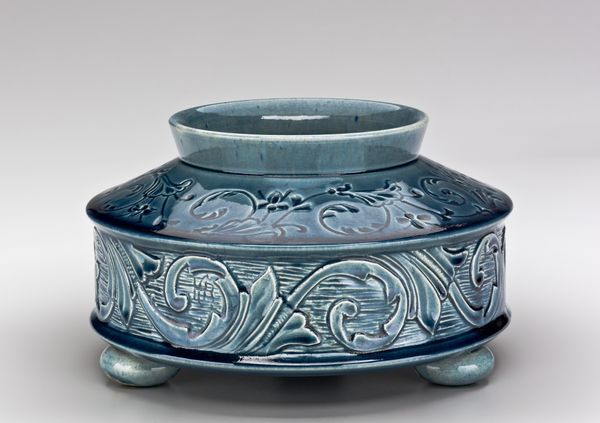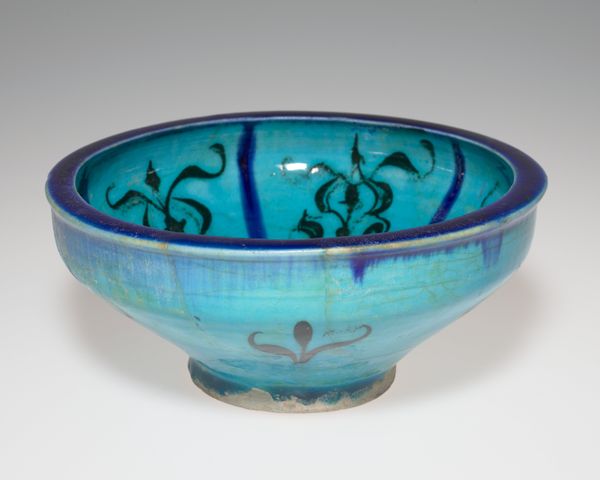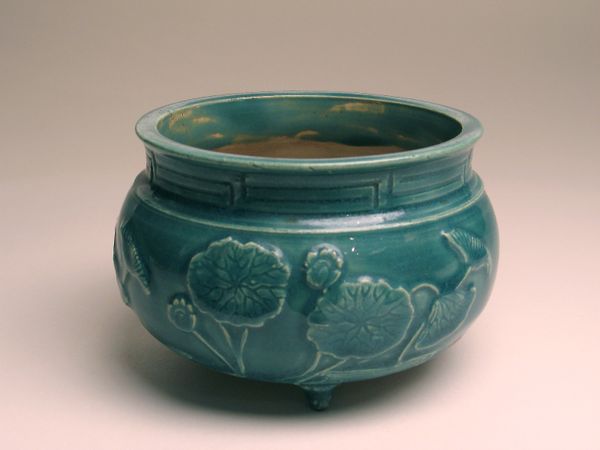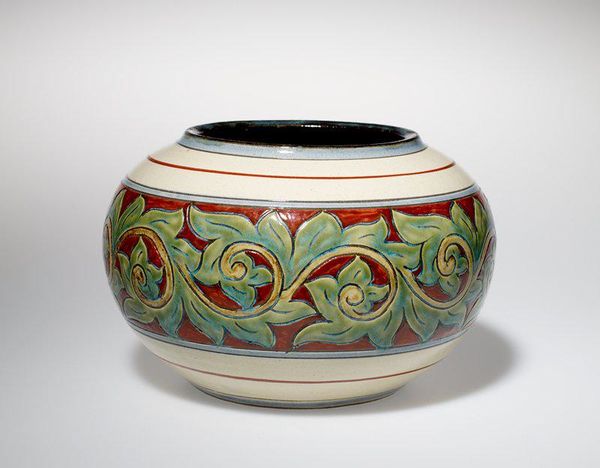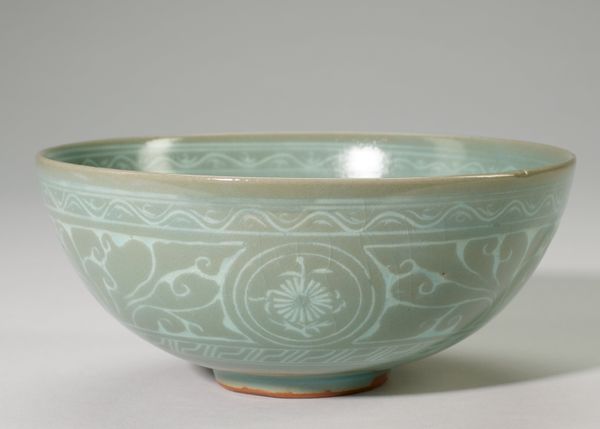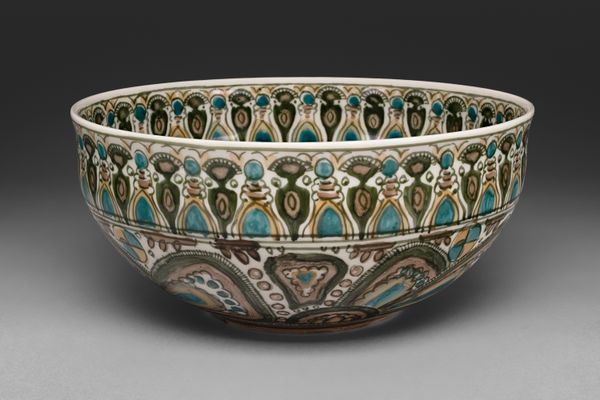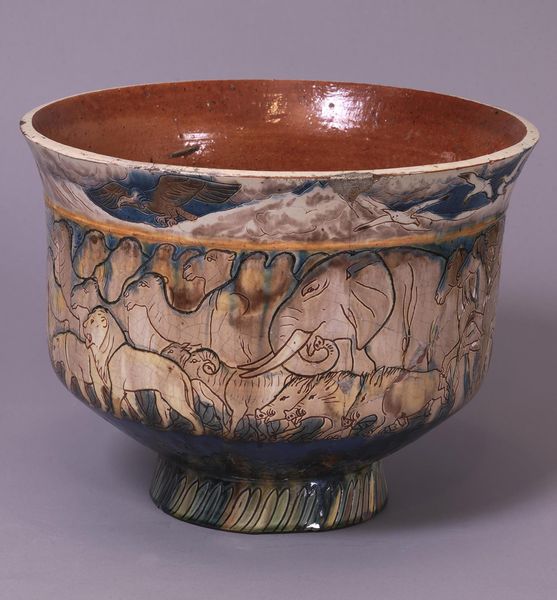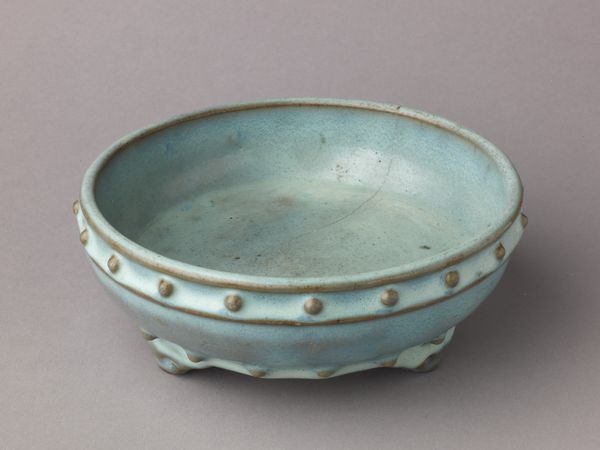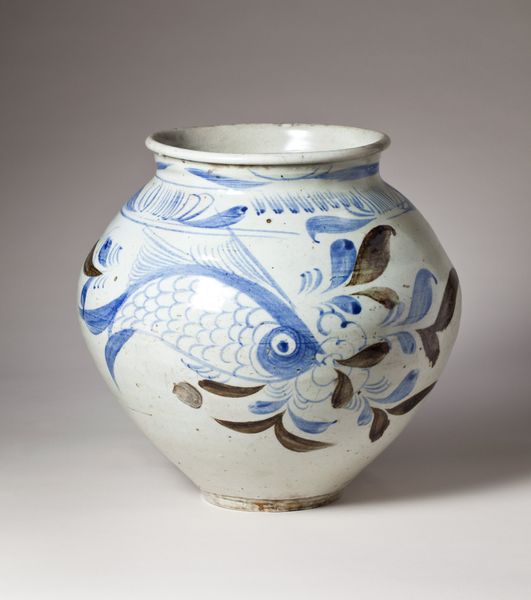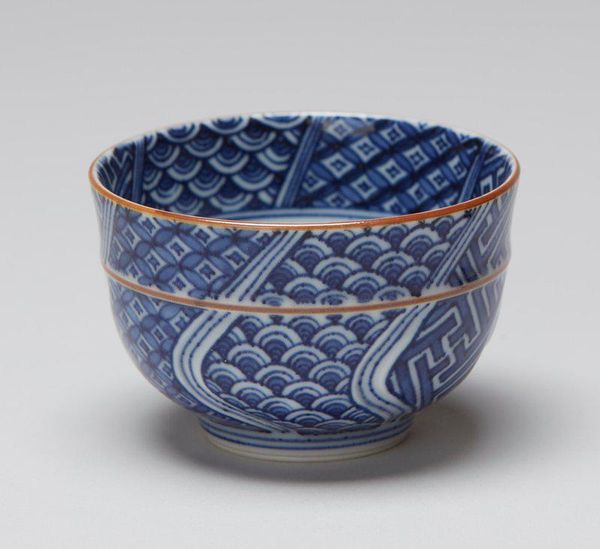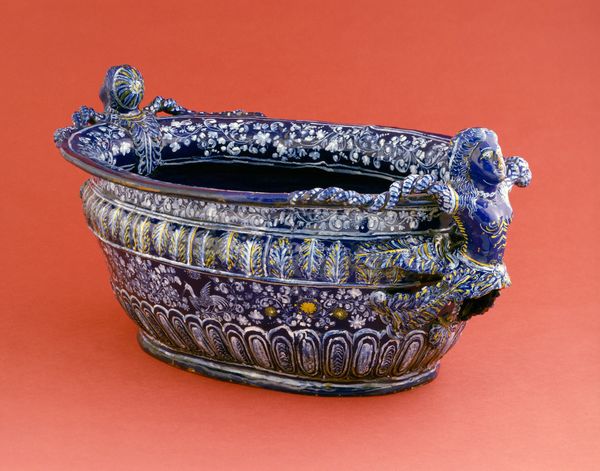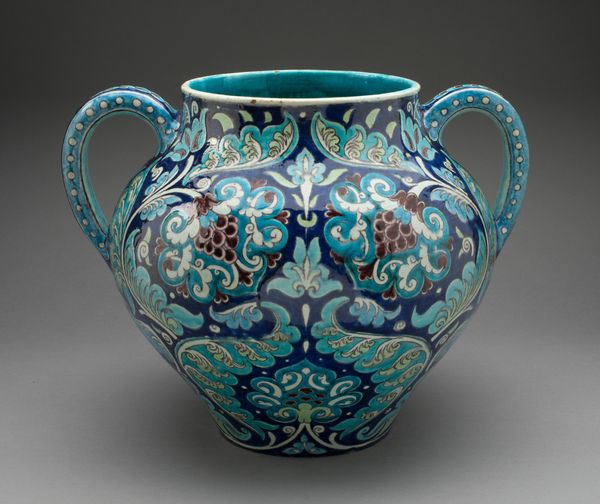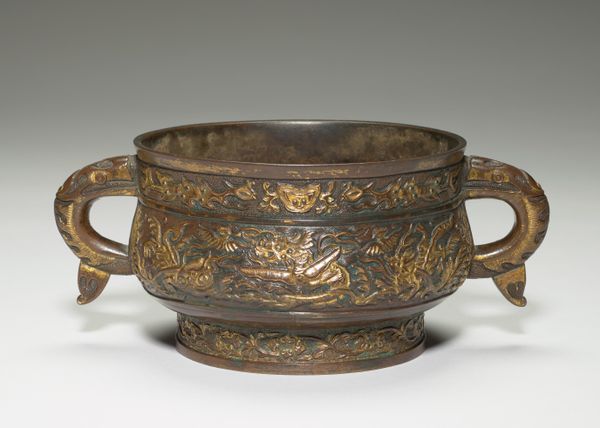
ceramic, sculpture
#
decorative element
#
asian-art
#
ceramic
#
sculpture
#
ceramic
#
decorative-art
Dimensions: 3 1/4 × 7 1/4 in., 1.3 lb. (8.3 × 18.4 cm, 0.6 kg)
Copyright: Public Domain
Editor: So, this "Bleu de Deck" bowl was crafted between 1865 and 1885 by Joseph-Théodore Deck. The raised, almost cartoonish dragons feel quite imposing. It’s a striking piece of decorative ceramic sculpture, but the color and detailing feels very ‘extra.’ What resonates with you when you look at this object? Curator: The azure color immediately evokes the Qing Dynasty porcelain glazes, known for their exquisite balance of vibrancy and depth. However, Deck, a Frenchman, reinterpreted these age-old Eastern motifs. How does the image of the dragon typically function in Chinese iconography? Editor: Dragons usually symbolize power, good fortune, and imperial authority. But how does this bowl subvert or reinforce those symbols? It almost feels playful, lacking the solemnity you’d expect. Curator: Exactly! The playful aspect could be viewed as a form of cultural appropriation, diluting the profound meaning associated with the dragon. Deck perhaps aimed to capture the aesthetic beauty without fully engaging with the cultural memory it embodies. The Western gaze often simplifies complex symbolic systems. Do you see this as reverence or commodification? Editor: Perhaps both? It's definitely beautiful, and Deck's passion seems evident. But there’s a flattening that inevitably happens. I guess I'm left wondering how Deck truly understood the weight of the dragon he chose to represent. Curator: Precisely. And that tension—between appreciation and appropriation, between surface and substance—makes it a fascinating object to contemplate. We're reminded that symbols are never fixed; their meaning shifts across cultures and throughout time.
Comments
No comments
Be the first to comment and join the conversation on the ultimate creative platform.
